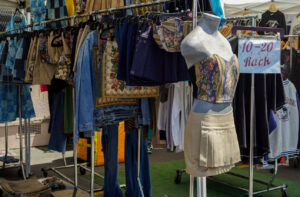Negli ultimi anni, il mercato dei beni di seconda mano in Italia ha subito una trasformazione radicale. Se nel 2014 l’acquisto di articoli usati era spesso visto negativamente e praticato principalmente per necessità, entro il 2023 si è affermato saldamente come una scelta comune per una larga parte della popolazione. Fairness Magazine esplora le dinamiche di questo cambiamento, evidenziando l’impatto culturale, economico e generazionale del fenomeno.
La Crescita del Mercato dei Beni di Seconda Mano
Nel 2023, il mercato dell’usato ha raggiunto un livello di accettazione senza precedenti, diventando una scelta consolidata per il 61% degli italiani coinvolti. La frequenza con cui le persone comprano e vendono beni usati è aumentata significativamente, con il 76% degli acquirenti e il 71% dei venditori che partecipano al mercato dell’usato almeno due volte l’anno. Inoltre, l’81% degli intervistati ha riferito di aver acquistato o venduto un numero o volume di articoli pari o superiore all’anno precedente, segnalando una crescente familiarità e comfort con questo tipo di economia.
Demografia e Dinamiche Generazionali
La popolarità del mercato dell’usato varia notevolmente tra le diverse demografie. I dati mostrano che i gruppi più attivi sono la Generazione Z, con un impressionante 88%, seguiti dalla fascia di età 35-44 anni con il 76%, e le famiglie con bambini con il 75%. Questa tendenza è indicativa di un cambiamento paradigmatico più ampio nel comportamento dei consumatori, spesso guidato da una maggiore consapevolezza ambientale e dalla ricerca di opzioni più economiche.

L’Impatto della Digitalizzazione
La digitalizzazione ha giocato un ruolo cruciale nell’evoluzione del mercato dei beni di seconda mano. La facilità di accesso ai mercati online ha trasformato il modo in cui i consumatori interagiscono con l’economia dell’usato. Nel 2023, il 63% degli intervistati ha preferito i canali online per comprare e vendere beni usati, che ora rappresentano il 50% del valore economico totale del settore, stimato in 13 miliardi di euro. La distinzione tra piattaforme online e offline è diventata sempre più marcata, con il 71% degli acquirenti e il 72% dei venditori che preferiscono l’online rispetto al 60% e 36%, rispettivamente, per l’offline.
Sfide e Opportunità
Nonostante la sua impressionante crescita, il mercato dei beni di seconda mano affronta diverse sfide, tra cui la gestione della fiducia e della qualità dei prodotti. Tuttavia, offre anche significative opportunità, come promuovere un’economia circolare e ridurre l’impatto ambientale attraverso il riutilizzo dei prodotti. Le aziende che operano in questo settore stanno rapidamente adottando strategie innovative per superare questi ostacoli, migliorando la logistica, la verifica dei prodotti e l’esperienza del cliente.
Prospettive Future
Il mercato dei beni di seconda mano in Italia si sta dimostrando molto più di una tendenza passeggera o di una soluzione economica temporanea. È diventato un elemento fondamentale dell’economia nazionale e un simbolo di un cambiamento culturale verso un consumo più sostenibile e consapevole. Guardando al futuro, si prevede che questo mercato continuerà a espandersi, guidato dall’innovazione tecnologica e da una crescente consapevolezza ambientale. Gli stakeholder di questo settore sono quindi chiamati a navigare in questo panorama in evoluzione, continuando a offrire soluzioni che soddisfano le esigenze dei consumatori in modo responsabile ed etico. Il percorso di crescita e le sfide del mercato dei beni di seconda mano forniscono uno sguardo dettagliato su come il panorama del consumo in Italia sta cambiando e quali potrebbero essere le implicazioni per il futuro del commercio e del comportamento dei consumatori nel paese.
Ig – @fairness_mag


